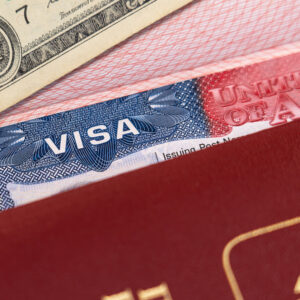For the past several years, COVID-19 ran rampant and devastated businesses across the country. Especially hard-hit was the tourism industry as travel ground to a standstill overnight and Americans were asked to shelter in place to discourage unnecessary contact with others. While most sectors of our economy are getting back on their feet, the tourism industry waits to recover.
Hopefully, the Biden administration will examine its policies impacting tourism and Congress does likewise and commit to policies and reforms the tourism industry needs.
During the pandemic hotels, resorts, aircraft, and convention centers stood empty as the engines that drove many communities stood silent. While some businesses have since rebounded – and some were saved through the direct intervention of the federal government – there are still hurdles to overcome. The hit New York City took says it all: the $19 billion the city took in from tourism in 2019 has hovered near zero for well over a year, a shocking and stark figure that sets off sirens about the urgency of the situation.
To help alleviate the problem and even drive local economies to further heights, we can look to previous federal actions for a proactive and fitting solution.
The global financial calamity born out of the housing crisis in the early 2010s led to similar financial struggles as Americans cut back on expenses and leisure travel. Realizing the effects this would have on the impacted industries, the federal government sought after and considered a constellation of diverse solutions to help ease the problems presented by the difficult economic environment. One of these solutions was to examine the issuance of tourism visas and offer several key changes to allow more international tourists to enter the United States.
As it stands, the system for processing tourism visas is something of a mess. Unlike many other countries around the world, the United States only accepts visitors from a handful of countries whose citizens do not need to seek a visa before arriving in the U.S., with the rest forced to apply for a visa at their respective local embassy or consulate. Backlogs, depending on the country, can vary wildly, with some approaching or even exceeding a year. There is also a nonrefundable (in the case of rejection) affiliated cost of $160 per person just to apply. Factors like these constrict the number of travelers, who are desperately needed as the wider economy struggles.
In 2012, an executive order aimed at cutting wait times and offering more people from across the globe the chance to visit the United States was implemented. This push increased visa processing times and capacities in the embassies of key countries while simultaneously creating a ‘National Travel and Tourism Strategy’ to coordinate the government approach.
While these moves seem modest, they provided a desperately needed boon during a dark time. These efforts also bore fruit, with international travel spending eclipsing $155 billion in 2019. With millions of jobs reliant on travel, this means more hours worked, more jobs created (or retained), and more money flowing through the economy.
Congress and President Joe Biden should follow the lead of previous administrations and examine similar pathways to economic growth, especially as the possibility of another recession looms.

